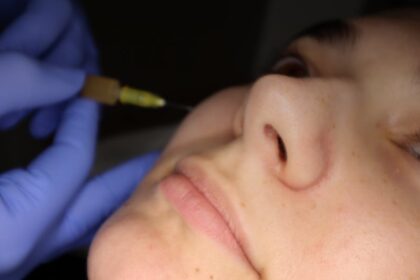What is fertility? – the ability to conceive a pregnancy is what we call as fertility. Fertility requires both male and the female partner right so the evaluation of infertility has also to focus on both male and female partners. We need a healthy sperm from the male partner, a healthy egg from the female partner – both of these are haploid – the egg and the sperm are haploid. They have half the chromosome number, then they are going to fuse together, fertilize and we are going to get a diploid zygote and that’s your pregnancy.
What is infertility?
Infertility is simply the inability to achieve a pregnancy, the inability to conceive is what we call as infertility.
Each month in a regularly timed manner the woman’s body prepares to achieve a pregnancy and primarily the reproductive organs, so the uterus and the ovaries are all set in motion. Each month this happens – the healthy egg is released during the menstrual cycle. In the menstrual cycle – a regularly cycling woman who has for example approximately 28 day cycle.
- First half of the cycle what is happening is the follicles are growing then
- 14th day somewhere the ovulation takes place the egg is released it is captured by the fallopian tube.
What is left of the follicle becomes the corpus luteum right, so in the first half of the cycle the oestrogen is getting produced in the second half of the cycle we are getting progesterone so both this oestrogen and progesterone are causing building up of the endometrium. Oestrogen causes the proliferation of the endometrium; progesterone causes the secretory changes in the endometrium ultimately leading to building up of the endometrium.
We also need a good number of healthy motile sperms because ultimately when the semen is deposited in the woman’s vagina, some of the sperms are going to be lost in the process it’s a long journey upwards. Some of the sperms are lost in the uterine cavity, some of the sperms are lost in the vagina, and only a few successful ones here are going to get the journey completed and are going to reach the fallopian tubes. It is the fallopian tubes which are the site of fertilization, so fertilization is when the sperm enters the egg and the female of the egg nucleus and the sperm nucleus takes place that is what we call as fertilization and the site of this fertilization is the ampulla of the tube.
Now very interesting point to note here is that the fertilizable lifespan of an egg is only max to max about 24 hours and the fertilizable lifespan of the sperm is max to max about 72 hours. That is the period of maximum fertility. Maximum fertility is around the time of ovulation. In fact, most of the pregnancies conceived most of the fertilizations achieved they happen when intercourse happens three days prior to and on the day of ovulation, so around that time is the period of highest fertility.
The Journey of Fertility Forward
Now the egg has been released, it has been captured by the fallopian tube, it’s there inside and the semen is deposited in the vagina by the act of coitus. Now the sperms are going to ascent up into the uterine cavity finally reaching the fallopian tube. Sperms are required in adequate numbers so millions of sperms are present in the per ejaculate volume and out of those millions of sperms, some thousands only manage to reach the fallopian tubes.
How do these sperms reach up?
They go up by virtue of their own motility. The sperm needs to be actively motile with a forward motility. They have to have forward motility they need to climb up, so this motility will depend upon the structure of the sperm. The sperm needs to be motile; it needs to have a healthy tail which is going to beat like a flagella and give it motility. There has to be a mitochondria which is going to give the energy for the movement of the sperm and finally the sperm also has an acrosomal cap.
Any male factor which is going to interfere with the physical act of coitus like it could be a psychogenic impotence, it could be a drug induced impotence, it could be a premature ejaculation or it could be any factor which interferes with the physical act of coitus… Any male factor that is going to affect the quantity and quality of sperm is going to indeed contribute to infertility.
Period of Maximum Fertility
The period of maximum fertility is around the time of ovulation. Around the time of ovulation the woman’s system also helps the ascent of sperm so like give them some assistance so that assistance comes from here at the level of the cervix. This is the first resistance also and this is where the first assistance also comes so during the timing of around the time of ovulation the cervical mucus becomes very thin and stretchable – a phenomenon that happens because of the high amounts of oestrogen during the time of ovulation and this is phonemicized called as spin barky. Now because the cervical mucus becomes thin and stretchable the sperms can easily penetrate through the cervical mucus upwards into the genital tract right so any genital tract infection is going to make the cervical mucus thick can provide hindrance to the ascent of sperms and going to interfere with that cervical stenosis. If there is a cervical stenosis because of fibrosis in this area the fibrosis could have been a result of a history of prior dilatation and curettages and there can be many factors for that it could be infective it could be congenital whatever be the reason. If there’s cervical stenosis it is going to provide a mechanical hindrance to the ascent of sperms.
Any uterine factors any uterine factors like submucosal fibroid so you can have a growth here a tumour of the myometrium here and if it is invading into the endometrial cavity that’s called a submucosal fibroid so that can also provide mechanical hindrance to the ascent of sperms and all of these factors you know can what we say contribute to infertility. There are the male factors which can contribute to infertility and further down the line the journey of conception the journey of fertility is not yet complete the sperms have to move up into the genital tract and there the sperms gain the capacity to fertilize they gain hyper motility which is called as capacitation. This is an extremely important step it takes place in the female genital tract now this part of maturation of the sperms that is capacitation takes place in the female genital tract it begins in the cervix but the major part of this capacitation occurs in the tube. It takes approximately about seven hours of duration so this capacity to fertilize and hyper motility is extremely important because see these sperms have to drill inside the egg right so that journey is still left.
Let’s have a look at there what happens during fertilization is you can see here that a number of sperms you know reach the vicinity of that single egg right and when egg is released. When the egg is released into the fallopian tube it is still surrounded by these cells which are the corona radiator and there is also this thick acellular membrane that is covering the oocyte that’s called as the zona pellucida here. So the sperms need to penetrate this layer of the corona radiator ultimately it will be able to reach this zona pellucida and once that has happened the sperm binds to the zona pellucida that triggers an acrosomal reaction and the acrosomal reaction causes release of enzymes from the acrosome which was the cap on the sperm head.
The secondary oocyte which is arrested in the metaphase of the second meiotic division and this meiosis too is completed during the time of fertilization. So, further maturation of the egg is achieved once the fertilization gets completed. Once that is done meiosis gets completed and we get a mature egg. Now this mature egg is going to finally fuse with the male pronucleus so fusion of male and female pronucleus we are going to get a complete fertilization is going to be achieved and that is what happens here this is the whole process.
Let’s take the journey forward because that’s not all ultimately to achieve a healthy pregnancy. It needs to be present in the uterine cavity it needs to find its ground so what we have got is here is a zygote that has been formed this zygote is going to undergo cleavage right and it is going to form a morula. Simultaneously development of the early you know conceptus is also taking place right we have this corpus luteum here as we can see once the egg has been released in the second half of the cycle now the important thing to note here is what is the role of the tube in all of this so yes ovum capture right that’s the role of the femoral ends of the fallopian tube is the site of fertilization. This conceptus has to move into the uterine cavity and that is facilitated by the action of the fallopian tubes. Now these fallopian tubes they have peristalsis like activity they have a cilia beating towards the uterine cavity that helps in the movement of the conceptus towards the uterine cavity and finally the tubal secretions the tubal epithelium also leads to secretions which are going to nourish this early embryo so that’s important role of tube.
In this article, we have covered in-depth an overview of the Basic Infertility Training Course in India. Though the name suggests basic, it way more advanced than thought of. Further, this course is not just for the beginners… it is for all the reproductive medical specialists, who would like to upskill or continue their Medical Education without any hindrance to their practices. Medline Academics is an educational institution for training in reproductive medicine and is known for its hybrid model of Post Doctoral Fellowship in Reproductive Medicine. This course givens the mentees a chance to pursue their medical education without compromising their regular practice. Besides, doctors who prefer doing it offline, Medline Academics has the full-time program for reproductive medicine as well. And the best part about these fellowship programs are that – These are University Affiliated.
The clinical wing of Medline Academics – Dr. Kamini Rao Hospitals – one of the IVF centres in Bangalore, is one such place where people are treated, healed and mentored. The students are trained under expert faculties and senior doctors, where they learn about the most difficult procedures and observe the treatment protocols. In rare circumstances, they are also given hands-on depending upon the severity of the case. Since, there is no chance to make mistakes and learn in live patients or real scenario, Medline Academics offers students simulation training or hands-on on simulators where they are given multiple chances to expertise.
Enrolments for the next Batch is Live Now!


